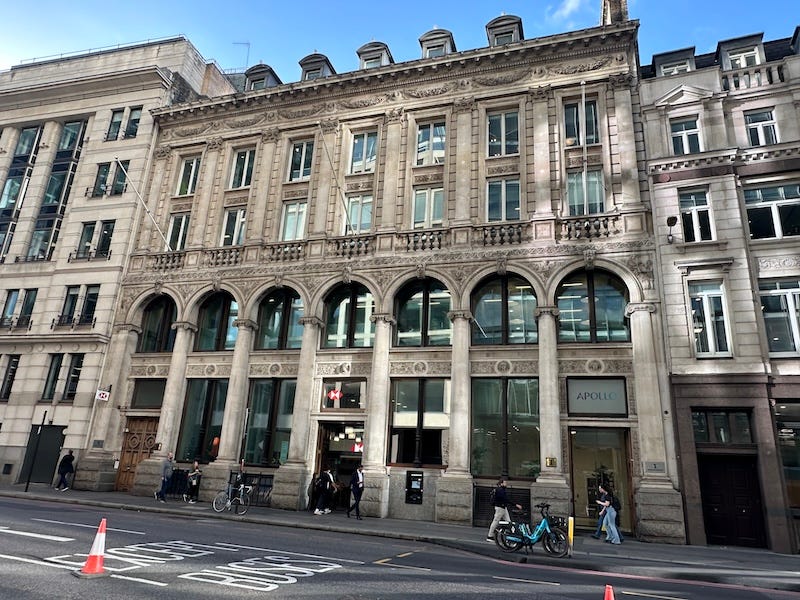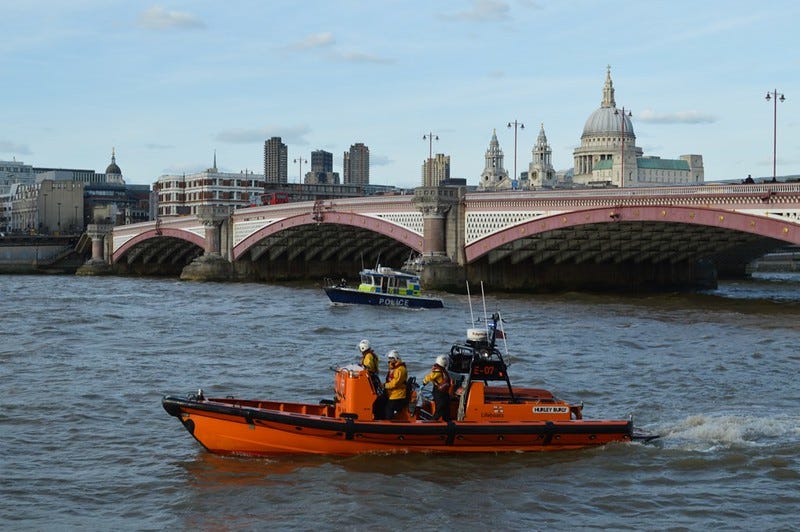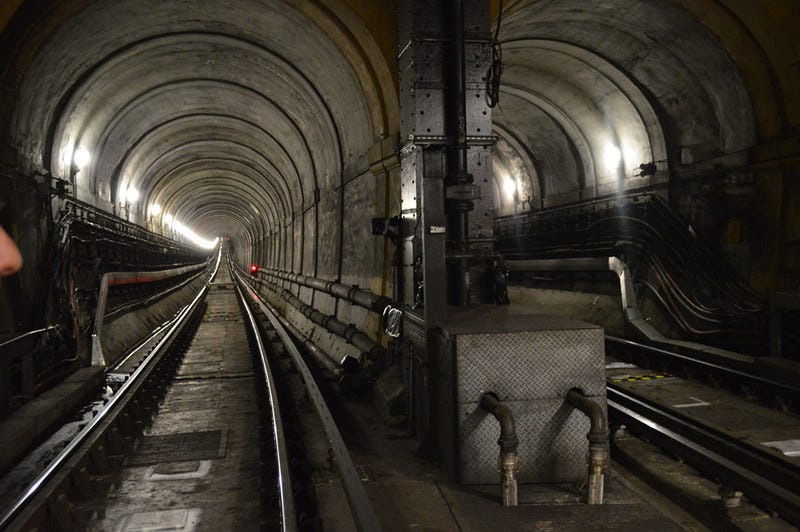The Lost London Tavern Where It *All* Happened
The City of London Tavern is a forgotten nexus.
Welcome to Londonist: Time Machine’s Friday edition for paying subscribers, with a generous teaser for everyone else.
Today, we’re heading to the London Tavern, a long-lost venue on Bishopsgate. It’s a place that very few people have heard of today. The generic name does not help. You could read the words “The London Tavern” a thousand times, and never form an engram. But we should make a special effort. Some of the most important meetings in London’s history took place within its walls, as we’ll find out in today’s newsletter. First, though, the History Radar…
History Radar
Upcoming events of interest to London history fans.
🫖 HISTORICAL AFTERNOON TEA: Bit of an odd one. How do you fancy a posh afternoon tea themed around police history? That’s exactly what Great Scotland Yard Hotel, just off Whitehall, is offering. “Each part of the menu represents a different chapter of the building’s past, from Sir Robert Peel’s 'bobbies' to the modern day police force. For example, the 1829 is an egg truffle mayo sandwich with chives, stamped with the year the building was founded, served on a glass-topped table featuring evidence from various robberies.” What will they think of next?
🏮 GAS LAMPS: Join
on 23 October for an online talk about Westminster’s alluring gas street lamps. Luke is one of the ‘gasketeers’, a small band who lobby for the preservation of these lambent sentinels of another era. Money raised from the talk will go to the Victorian Society.🔥 HOUSEWARMING: Head to the Museum of the Home for a late opening on 24 October for Housewarming: A Room Upstairs in 1956. Curator-led tours, Irish dance workshops, and performances are on the programme, which explores the themes, interiors, and social context of 1950s Britain. Note that although entry is free, there's a charge for some activities.
🏚️ A STRANGE MADNESS: Following a sold out show last week, there's another chance to get inside the beautifully distressed Annetta House on Princelet Street, Spitalfields this week (24 October), with an exploration of love and madness in the 17th century, including live lute and theorbo music composed by Dowland, Danyel and Purcell.
👸🏻 MEDIEVAL WOMEN: Both famous and forgotten women have their stories told in the British Library's new exhibition, Medieval Women: In Their Own Words, opening 25 October. It uses 140 items including books, an ivory cross, textiles and a lion's skull to break free from traditional narratives and tell the real stories.
The Lost London Tavern Where It *All* Happened
👆 This is the spot where, exactly 200 years ago, the idea of lifeboats was floated.
Not this exact building, which is now a branch of HSBC, but its predecessor. Here, at the bottom end of Bishopsgate, stood the City of London Tavern — usually called The London Tavern. It is arguably the most important London building that nobody has heard of.
The Royal National Lifeboat Institution (RNLI), as we now call it, was founded on this spot on 4 March 1824. Its mission was simple: to reduce the appalling death toll from shipwrecks in British waters. No lesser figure than the Archbishop of Canterbury sat in the Chair.
The UK now has over 400 lifeboats. Their launch can be traced back to that early spring meeting in the London Tavern, precisely two centuries ago.
The London Tavern could be rightfully proud if that was the only meeting of note upon its premises. But so much happened here it could carry a dozen memorial plaques.
Also in 1824 — just a couple of weeks before the lifeboat meeting — a key moment in the history of London transport and engineering took place at the Tavern. It was here that Marc Brunel held the first public meeting for his proposed Thames Tunnel. This was an audacious venture to build the world’s first tunnel beneath a major river. It would take 20 years to complete.
The tunnel between Wapping and Rotherhithe is today part of the Windrush line (formerly the London Overground), still going strong exactly two centuries after Brunel first pitched it at the London Tavern. 1,381 shares were bought that day, getting the project off to a sound financial start. Incidentally, Brunel’s better known son Isambard was back at the London Tavern in 1839 to decide upon the gauge of track to use on the Great Western Railway.
The Grandest Tavern in all Europe
By this time, the London Tavern was already well established as a meeting place for all kinds of venture. This was the venue of choice if you wanted to set up a charity, form an interest group or gain seed funding for a new business.
The first London Tavern, whose origins are mysterious, was lost to a devastating fire in 1765, a fire which took out most of the block. The tavern was quickly rebuilt to the designs of Richard Jupp, who is perhaps best known as the architect of Severndroog Castle, as well as the chapel to Guy’s Hospital. It reopened in 1768 when it was described by one newspaper as “the grandest tavern in all Europe”.
The name ‘Tavern’ here is somewhat misleading. This was not some cosy, folksy place where you might exchange banter with the stout yeoman of the bar, or share a pint beside a roaring fire. No, this was a splendid banqueting hall, richly decorated with swags, garlands, paintings and drapery. It was custom-built for dinners and gatherings, with an army of 60 catering staff. Gibson Hall, which still stands a few doors down from the site, is perhaps the closest comparison.

Such was the kitchen’s reputation that other banqueting houses ordered takeaways. The largest order of all came in 1837, for a Royal Banquet at Guildhall, attended by Her Youthful And Newly Minted Majesty Queen Victoria. The vast order is enough to make us vegetarians weep. 1,100 pints of turtle soup, for starters. For the mains, 60 roast turkeys were supplied, along with 80 pheasants, 10 leverets, 40 partridges, 40 fowl, and a motley Noah’s ark of auxiliary butchery. This was a culinary powerhouse. Labelling it a ‘tavern’ is like calling Henry VIII’s palace Hampton Court Bedsit.







